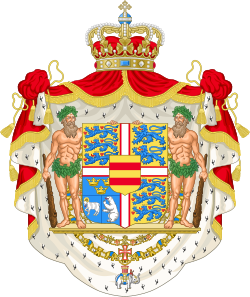Queen Sofía of Spain
| Sofía | |
|---|---|
 |
|
|
|
|
| Tenure | 22 November 1975 – present |
| Spouse | Juan Carlos I of Spain |
| Issue | |
| Infanta Elena, Duchess of Lugo Infanta Cristina, Duchess of Palma de Mallorca Felipe, Prince of Asturias |
|
| Full name | |
| English: Sophia Margaret Victoria Frederica Spanish: Sofía Margarita Victoria Federica Greek: Σοφία Μαργαρίτα Βικτωρία Φρειδερίκη |
|
| House | House of Bourbon House of Schleswig-Holstein-Sonderburg-Glücksburg |
| Father | Paul of Greece |
| Mother | Frederika of Hanover |
| Born | 2 November 1938 Athens, Greece |
| Signature |  |
| Religion | Roman Catholic prev. Greek Orthodox |
Queen Sofía of Spain (née: Princess Sophia Margaret Victoria Frederica of Greece and Denmark; Spanish: Sofía de Grecia y Dinamarca; Greek: Βασίλισσα Σοφία της Ισπανίας; born on 2 November 1938) is the wife of King Juan Carlos I of Spain.[1][2]
Contents |
Early life and family
Princess Sophia of Greece and Denmark was born in Psychiko, Athens, Greece on 2 November 1938, the eldest child of the King Paul of Greece (1901–1964) and his wife, Queen Frederika (1917–1981), a former princess of Hanover. Queen Sofia is a member of the Schleswig-Holstein-Sonderburg-Glücksburg dynasty. Her brother is the deposed King Constantine II of Greece and her sister Princess Irene of Greece and Denmark. However, since the abolition of the monarchy, the royal titles are not recognized by the Constitution of Greece.
Princess Sophia spent some of her childhood in Egypt where she took her early education in Elnasr Girls' College ( E.G.C ) in Alexandria, then went to South Africa during her family's exile from Greece during World War II. They returned to Greece in 1946. She finished her education at the prestigious Schloss Salem boarding school in Southern Germany, and then studied childcare, music and archeology in Athens.
She represented Greece in sailing at the 1960 Summer Olympics.
Marriage and family
On 14 May 1962 Princess Sophia of Greece and Denmark married Infante Juan Carlos of Spain, whom she met on a cruise of the Greek Islands in 1954, in Athens at the Church of Saint Dennis. In doing so, she relinquished her rights to the throne of Greece and converted to Roman Catholicism from Greek Orthodoxy, an act of convenience in order to become more palatable to Catholic Spain. Further, the Latin transliteration of her Greek name (Σοφία), was changed from Sophia to the Spanish variant Sofía, which nonetheless is pronounced identically to the original Greek version. Sofia was able to bring a cool realism to the marriage and shifted Juan Carlos from the sphere of influence of his father Don Juan to a more realistic rapprochement with Franco.
In 1969, Prince Juan Carlos, who was never Prince of Asturias, the traditional title of the heir to the throne, was given the official title of Prince of Spain by the Spanish state; this was a title suggested by Sofia herself. Juan Carlos acceded to the throne as Juan Carlos I in 1975.
The couple have three children: HRH Infanta Elena, Duchess of Lugo born 20 December 1963, HRH Infanta Cristina, Duchess of Palma de Mallorca born 13 June 1965, and HRH Felipe, Prince of Asturias born 30 January 1968. The King and Queen have eight grandchildren, four boys and four girls: Felipe and Victoria from the Infanta Elena; Juan, Pablo, Miguel and Irene from the Infanta Cristina; and Infanta Leonor, and Infanta Sofía, named in her honor, of Prince Felipe; all of whom are in the line of succession to the Spanish Throne.
Ancestry
Queen Sofía is both a great-great-granddaughter (paternally) and a great-great-great-granddaughter (maternally) of Queen Victoria of the United Kingdom and is, through several lines, her husband's third cousin. She is a first cousin of Ernst August of Hanover (Pretender), and through her great-grandfather George I of Greece, she is a second cousin to Charles, the Prince of Wales. Through Christian IX of Denmark and Queen Victoria, she is also related to Elizabeth II of the United Kingdom and thereby related to all the royal families of Europe. She is also a first cousin once removed of Elizabeth II's husband, Prince Philip, Duke of Edinburgh. Queen Sofia is of Romanov descent through her father's paternal grandmother, Olga Constantinovna of Russia, and of Hohenzollern descent through her mother, Frederica of Hanover, and through her paternal grandmother, Sophia of Prussia.
| Ancestors of Queen Sofía of Spain | ||||||||||||||||||||||||||||||||||||||||||||||||||||||||||||||||||||||||||||||||||||||||||||||||||||||||||||||||||||||||||||||||||||||||||||||||||||||||||||||||||||||||||||||||||||||||||||||||||||||||||||||||||||||||||||||||||||||||||||||||||||||||||||||||||||||||||||||||||||||||||||||||||||||||||||||||||||||||||||||||||||||||||||||||||||||||||||||||||||||||||||||||||||||||||||||||||||||||||||||||||||||||||||||||||||||||||||||||||||||||||||||||||||||||||||||||||||||||||||||||||||||||||||||||||||||||||||||||||||||||||||||||||||||||||||||||||
|---|---|---|---|---|---|---|---|---|---|---|---|---|---|---|---|---|---|---|---|---|---|---|---|---|---|---|---|---|---|---|---|---|---|---|---|---|---|---|---|---|---|---|---|---|---|---|---|---|---|---|---|---|---|---|---|---|---|---|---|---|---|---|---|---|---|---|---|---|---|---|---|---|---|---|---|---|---|---|---|---|---|---|---|---|---|---|---|---|---|---|---|---|---|---|---|---|---|---|---|---|---|---|---|---|---|---|---|---|---|---|---|---|---|---|---|---|---|---|---|---|---|---|---|---|---|---|---|---|---|---|---|---|---|---|---|---|---|---|---|---|---|---|---|---|---|---|---|---|---|---|---|---|---|---|---|---|---|---|---|---|---|---|---|---|---|---|---|---|---|---|---|---|---|---|---|---|---|---|---|---|---|---|---|---|---|---|---|---|---|---|---|---|---|---|---|---|---|---|---|---|---|---|---|---|---|---|---|---|---|---|---|---|---|---|---|---|---|---|---|---|---|---|---|---|---|---|---|---|---|---|---|---|---|---|---|---|---|---|---|---|---|---|---|---|---|---|---|---|---|---|---|---|---|---|---|---|---|---|---|---|---|---|---|---|---|---|---|---|---|---|---|---|---|---|---|---|---|---|---|---|---|---|---|---|---|---|---|---|---|---|---|---|---|---|---|---|---|---|---|---|---|---|---|---|---|---|---|---|---|---|---|---|---|---|---|---|---|---|---|---|---|---|---|---|---|---|---|---|---|---|---|---|---|---|---|---|---|---|---|---|---|---|---|---|---|---|---|---|---|---|---|---|---|---|---|---|---|---|---|---|---|---|---|---|---|---|---|---|---|---|---|---|---|---|---|---|---|---|---|---|---|---|---|---|---|---|---|---|---|---|---|---|---|---|---|---|---|---|---|---|---|---|---|---|---|---|---|---|---|---|---|---|---|---|---|---|---|---|---|---|---|---|---|---|---|---|---|---|---|---|---|---|---|---|---|---|---|---|---|---|---|---|---|---|---|---|---|---|---|---|---|---|---|---|---|---|---|---|---|---|---|---|---|---|---|---|---|---|---|---|---|---|---|---|---|---|---|---|---|---|---|---|---|---|---|---|---|---|---|---|---|---|---|---|---|---|---|---|---|---|---|---|---|---|---|---|---|---|---|---|---|---|---|---|---|---|---|---|---|---|---|---|---|---|---|---|---|---|---|---|---|---|---|---|---|---|---|---|---|---|---|---|---|---|---|---|
|
||||||||||||||||||||||||||||||||||||||||||||||||||||||||||||||||||||||||||||||||||||||||||||||||||||||||||||||||||||||||||||||||||||||||||||||||||||||||||||||||||||||||||||||||||||||||||||||||||||||||||||||||||||||||||||||||||||||||||||||||||||||||||||||||||||||||||||||||||||||||||||||||||||||||||||||||||||||||||||||||||||||||||||||||||||||||||||||||||||||||||||||||||||||||||||||||||||||||||||||||||||||||||||||||||||||||||||||||||||||||||||||||||||||||||||||||||||||||||||||||||||||||||||||||||||||||||||||||||||||||||||||||||||||||||||||||||
Royal duties
|
|
 |
|
HM The King
Extended royal family
|
Besides travelling with her husband within Spain and abroad, the Queen has her own agenda. She is the executive president of the Queen Sofía Foundation, which in 1993 sent funds for relief in Bosnia and Herzegovina, and is the honorary president of the Royal Board on Education and Care of Handicapped Persons and the Foundation for Aid for Drug Addicts. She takes special interest in programs against drug addiction, travelling to conferences in both Spain and abroad. The Museo Nacional Centro de Arte Reina Sofía is named after her, as is Reina Sofía Airport in Tenerife. In 2010 Queen Sofia attended the wedding of Victoria, Crown Princess of Sweden, and Daniel Westling, and also attended the final match of the 2010 Wimbledon Championships - Men's Singles where she watched Spanish tennis champion Rafael Nadal win for a second time, as well as the 2010 FIFA World Cup where the team from Spain was crowned as world champion.
She has been working closely with Dr. Muhammed Yunus on his Grameen Bank (or "Village Bank"), which offers microcredits to women across the world. Sofía has travelled to Bangladesh, Chile, Colombia, El Salvador and Mexico to support the activities of the organization led by Yunus.
Queen Sofia of Spain has also been a strong supporter of Somaly Mam's efforts and that of the NGO she founded, AFESIP (Agir pour les Femmes en Situation Précaire), in combating child prostitution and slavery in Cambodia. In 1998, Somaly Mam was awarded the prestigious Prince of Asturias Awards for International Cooperation in the presence of Queen Sofia.
The Queen is an Honorary Member of the San Fernando Royal Academy of Fine Arts and of the Royal Academy of History. She has received Honorary Doctorates from the Universities of Rosario (Bogotá), Valladolid, Cambridge, Oxford, Georgetown, Evora, St. Mary's University, Texas, and New York.
Life and lifestyle
The Queen is fluent in English, Italian, German, Greek and Spanish.
Opinions
|
|
 |
Extended royal family
|
An interview for the occasion of the Queen's 70th birthday with Opus Dei journalist Pilar Urbano revealed some details of the Queen's conservative ideals on politically debated issues and the lifestyle of the Queen. Strong controversy arose from comments against the same-sex marriage law recently approved by the Spanish Parliament, and also against Gay Pride demonstrations. "I can understand, accept and respect that there are people of other sexual tendencies, but why should they be proud to be gay?” she asked. "Should they ride on a parade float and come out in protests? If all of us who are not gay were to parade in the streets, we’d halt the traffic in every city.” On the subject of gay marriage, legal since 2005 in Spain, she offered these thoughts: "If those people want to live together, dress up like bride and groom and marry, they could have a right to do so, or not, depending on the law of their country, but they should not call this matrimony, because it isn't”. These opinions forced the Spanish Monarchy to be the center of the claim for a new Spanish Republic during 2009 Gay Pride Parade in Madrid, in which participation of left party Izquierda Unida included showing more than 100 republican flags.
She also critizised the military intervention in Afghanistan, where Spanish troops were taking part at the moment, her defence of religious education in schools, and her conviction that gender violence publicity will encourage new cases to happen.[3] Her opinions were the object of lively criticism from LGTB associations and from Spanish intellectuals.[4] Also responding were Spanish republican political parties like IU and ERC. Government party decided to keep silence, while conservative party PP decided to do so, after a first criticism of the Queen's political intervention from its representative.[5]
Also controversial were her publicly exposing private conversations between King Juan Carlos of Spain and King Hassan II of Morocco, and her revealing King Juan Carlos's autocratic references to Spanish regions as "my lands" (mis tierras).
She mentioned her relationship with her daughter-in-law Letizia Ortiz, a former divorcée, saying that Letizia has brought her closer to the people, and that she and Letizia spend time together and visit restaurants and shops. On the election of Barack Obama, she said how surprised she was that for the first time in the USA a black candidate might be elected as president, and said she does not tolerate racism. She also mentioned that the King would never abdicate, and that she is against abortion and euthanasia. After the uproar, a press release was issued mentioning that the Queen considered her words were expressed in private conversations and were 'inaccurate'. Pilar Urbano defended herself saying that the book had been sent to the Palace for approval and that everything in the book is documented.
Some members of the Spanish royal family, including the King's sister, the Infanta Pilar, Duchess of Badajoz (who declared her total agreement with Sofia), supported the Queen's opinions.
| Royal styles of Sofía, Queen of Spain |
|
|---|---|
.svg.png) |
|
| Reference style | Her Majesty |
| Spoken style | Your Majesty |
| Alternative style | Ma'am |
Titles, honours and arms
Titles
Here is a list of titles Queen Sofía held from birth in chronological order :
- Her Royal Highness Princess Sophia of Greece and Denmark (1938–1962)
- Her Royal Highness Infanta Sofía of Spain (1962–1969)
- Her Royal Highness The Princess of Spain (1969–1975)
- Her Majesty The Queen of Spain (1975–present)
Spanish honours
- Lady Grand Collar of The Royal and Distinguished Order of Charles III.
- Lady of the Royal Order of Queen Maria Luisa (1,193rd lady on 14 May 1962).
Foreign honours
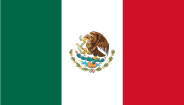 Order of the Aztec Eagle
Order of the Aztec Eagle Order of the Royal House of Chakri
Order of the Royal House of Chakri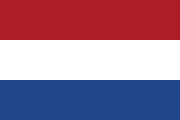 Order of the Netherlands Lion
Order of the Netherlands Lion Order of the Elephant
Order of the Elephant Order of St. Olav
Order of St. Olav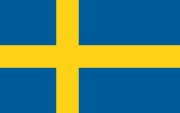 Order of the Seraphim
Order of the Seraphim.svg.png) Order of Leopold
Order of Leopold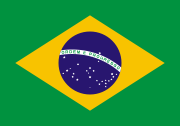 Order of the Southern Cross
Order of the Southern Cross Order of the Legion of Honour
Order of the Legion of Honour Order of Merit of the Federal Republic of Germany
Order of Merit of the Federal Republic of Germany Order of St. Olga and St. Sophia
Order of St. Olga and St. Sophia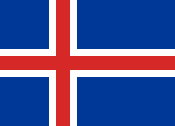 Order of the Falcon
Order of the Falcon

Arms
The personal coat of arms of the Queen impales the Spanish Royal Arms (her husband's shield) to the dexter (viewer's left) with her parent’s shield, the arms of King Paul of Greece – Azure a cross argent; inescutcheon, the coat of arms of Denmark as used when George I became king of Greece and showing the dynastic link to the Schleswig-Holstein-Sonderburg-Glücksburg dynasty; a shield containing a cross argent fimbriated gules from the Danish flag and subcoats representing Denmark, Schleswig, the former Kalmar Union, Iceland, the Faroe Islands, Greenland, Holstein, Stormarn, Dithmarschen, Lauenburg, Oldenburg, Delmenhorst, and the former Danish royal titles of King of the Wends and Goths.
All surmounted by the Spanish Royal Crown (Crown's arches differenced as consort) and surrounded by the Collar of the Order of Carlos III.[6][7]
The Queen's coat of arms has no official status. In Spain only the coats of arms of the King and the Prince of Asturias are official.
References
- ↑ Royal house of Bourbon, Unknown publisher, unknown date (accessed 19 January 2007)
- ↑ Her majesty the Queen www.sispain.org unknown date (accessed 19 January 2007)
- ↑ "No nos queman a nosotros. Son trozos de papel. Ya se apagarán". Confesiones polémicas de la reina Sofía en un libro al cumplir 70 años en www. elpais.com
- ↑ Malestar en el colectivo homosexual por las palabras de la Reina en www.elpais.com
- ↑ PP y PSOE ordenan guardar silencio sobre las declaraciones de la Reina en www.elpais.com
- ↑ (Spanish) The Arms of the Queen of Spain. Blog de Heráldica - 2 November 2008. (accessed 29 June 2009)
- ↑ (Spanish) The Arms of the Queen of Spain (Collar changed). Blog de Heráldica - 2 November 2008. (accessed 29 June 2009)
External links
- Official website of the Spanish Royal Family
- Official website of the Queen Sofia Foundation
- Royal House of Greece
- Royal House of Spain
- Queen Sofia Family Tree
|
Queen Sofía of Spain
House of Schleswig-Holstein-Sonderburg-Glücksburg
Cadet branch of the House of Oldenburg
Born: 2 November 1938 |
||
| Spanish royalty | ||
|---|---|---|
| Vacant
Title last held by
Victoria Eugenia of Battenberg |
Queen consort of Spain 22 November 1975 – present |
Incumbent Heir: Letizia, Princess of Asturias |
| Titles in pretence | ||
| Vacant
Title last held by
María of Bourbon-Two Sicilies |
— TITULAR — Queen consort of the two Sicilies Queen consort of Jerusalem Queen consort of Sardinia Queen consort of Gibraltar etc... |
Incumbent Heir: Letizia, Princess of Asturias |
|
|||||
|
|||||||||||||||||||
|
||||||||||||||||||||||||||
|
||||||||||||||||||||||||||||||||||||||||||||||||||
